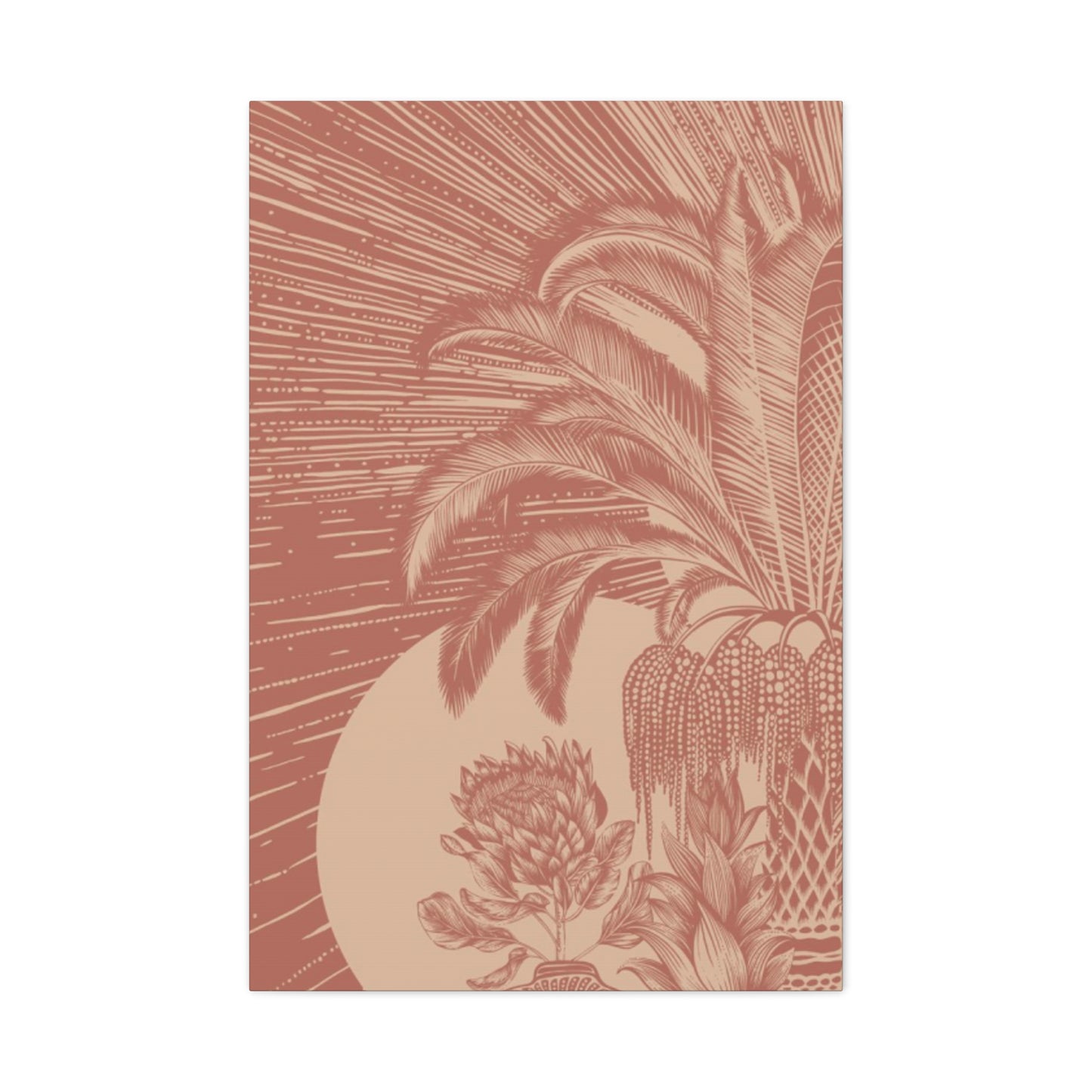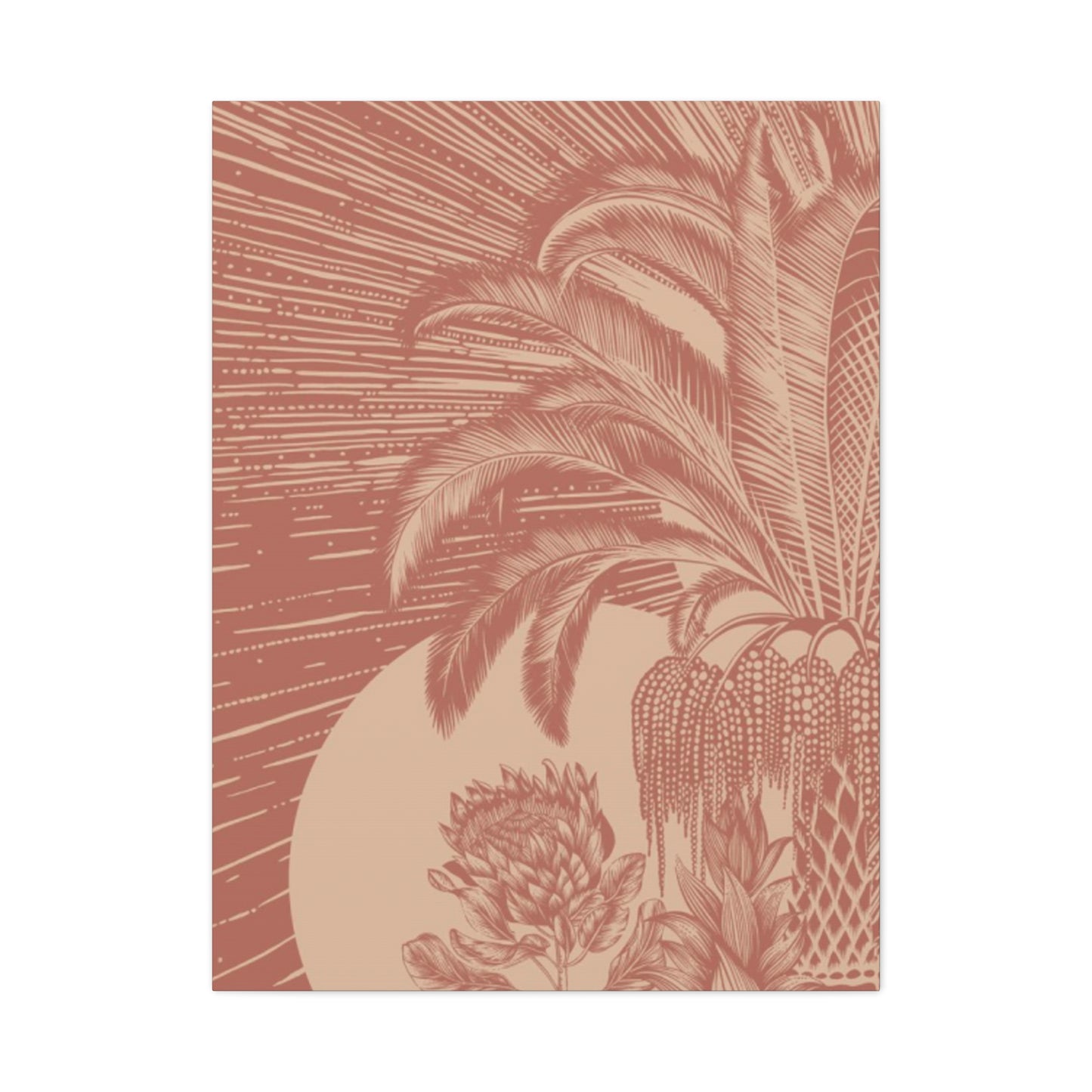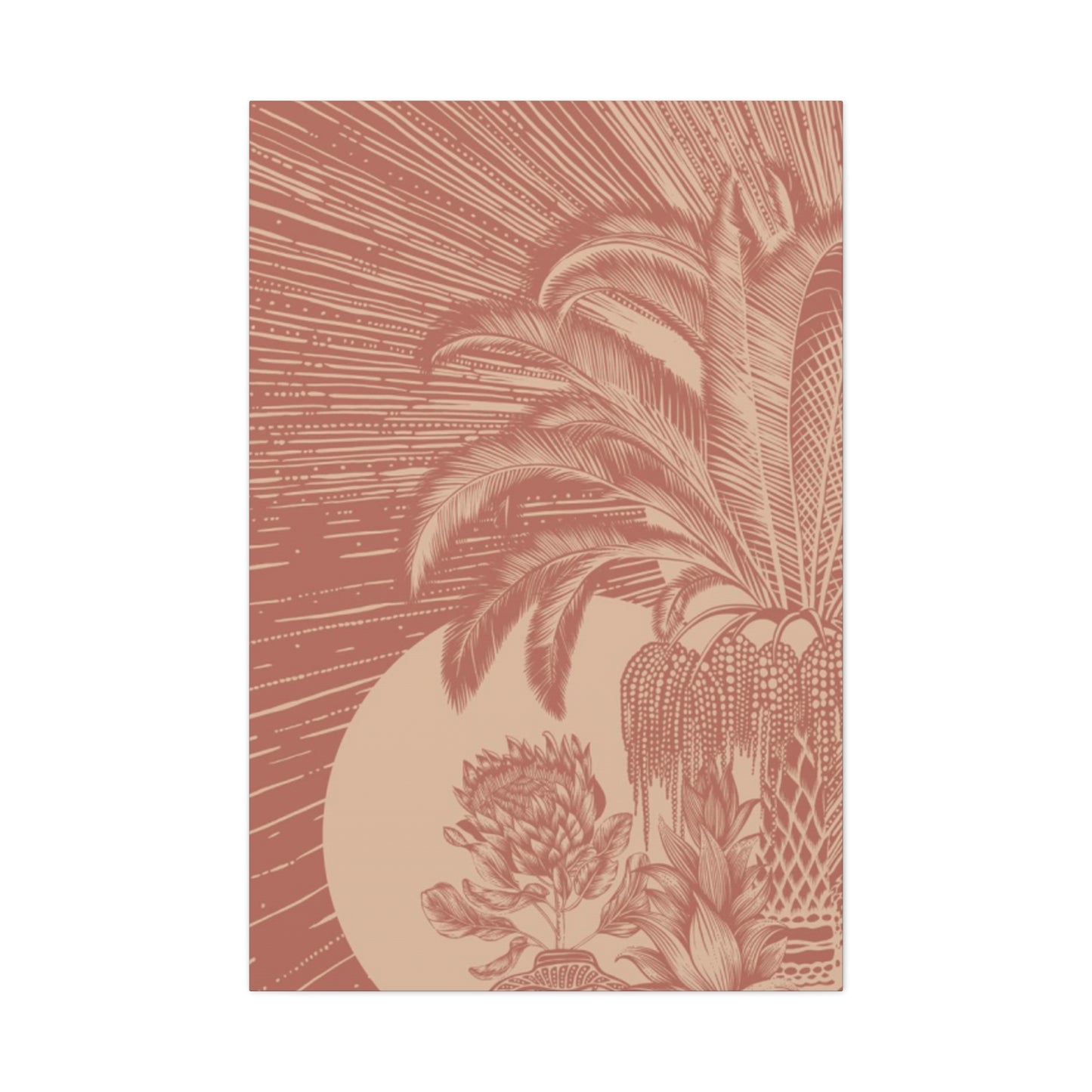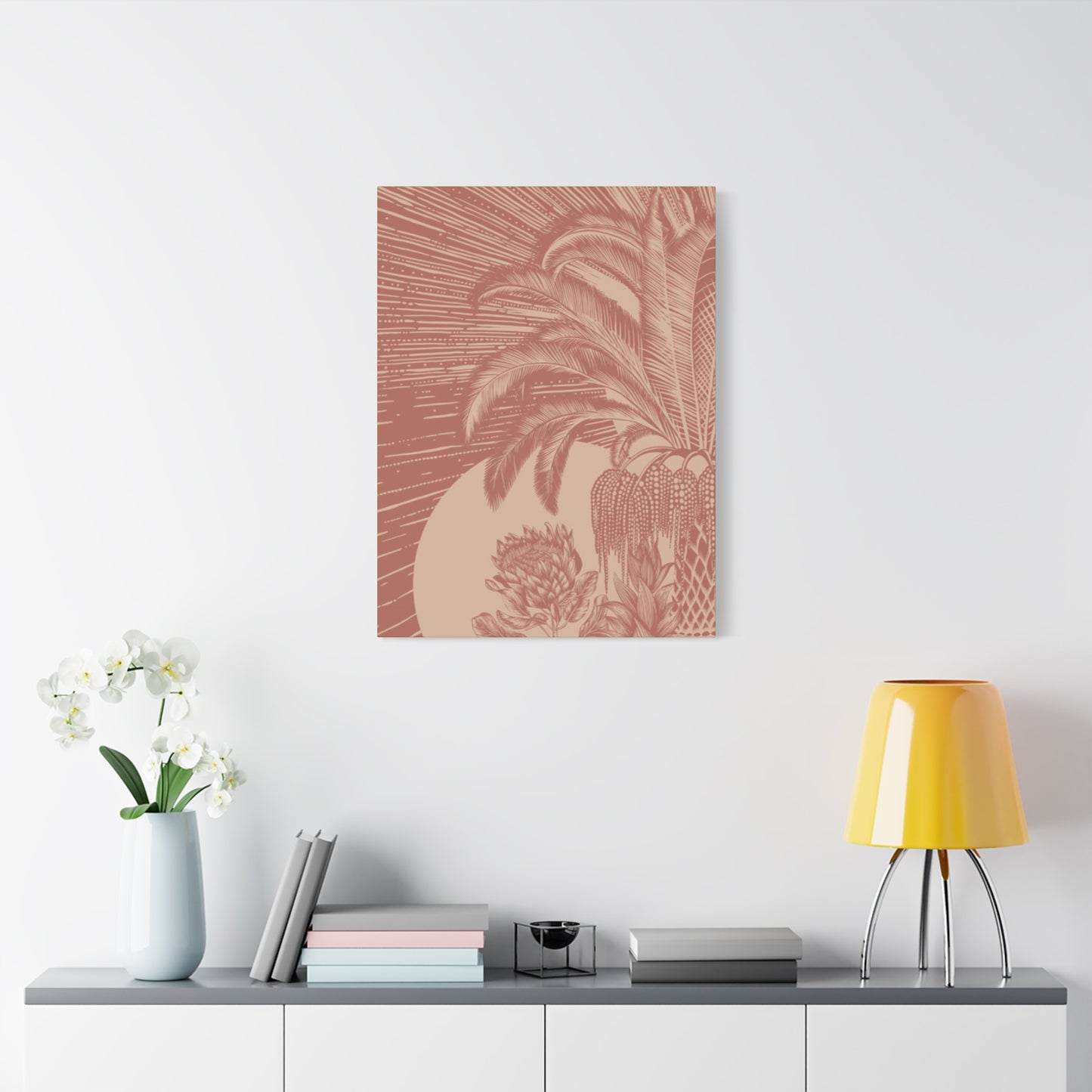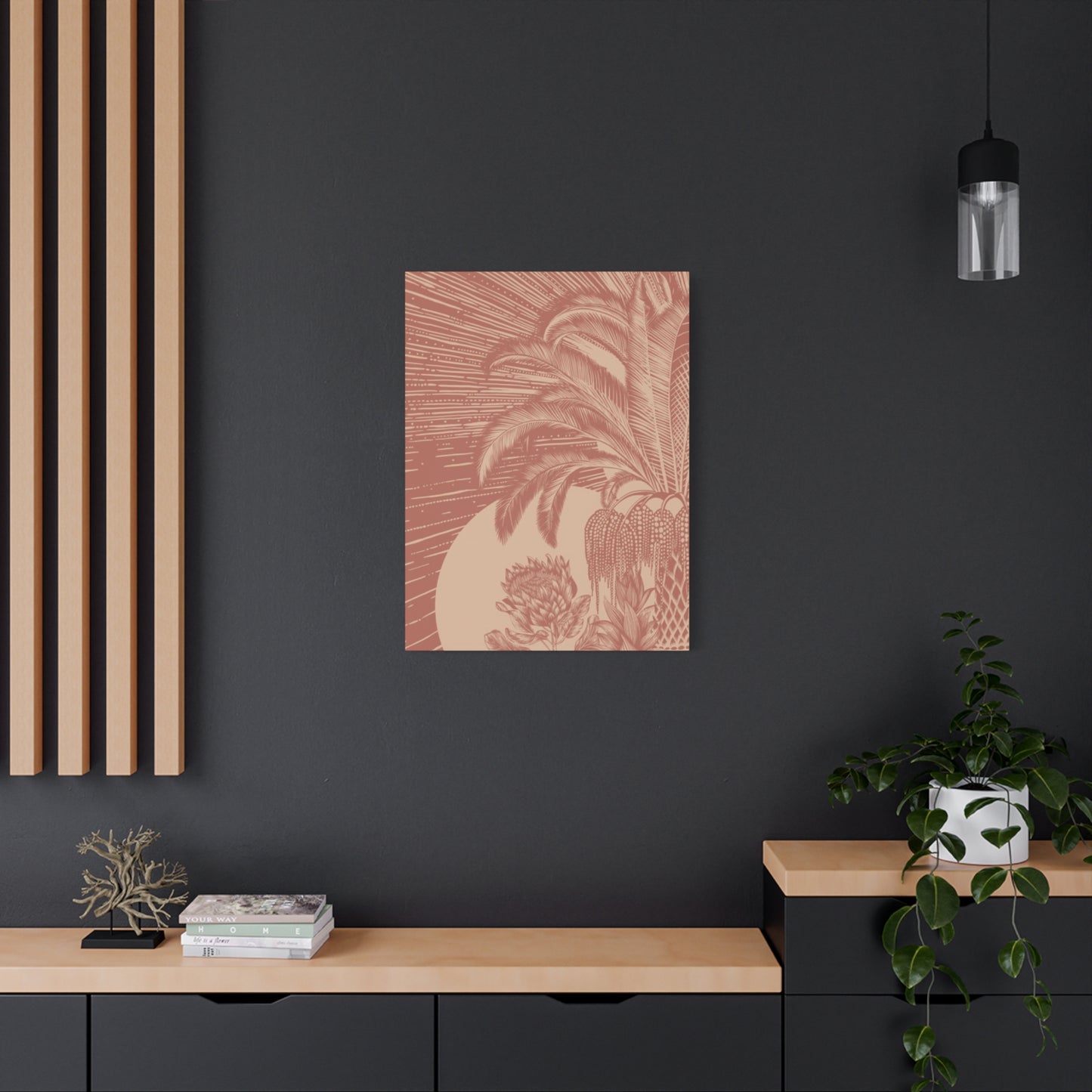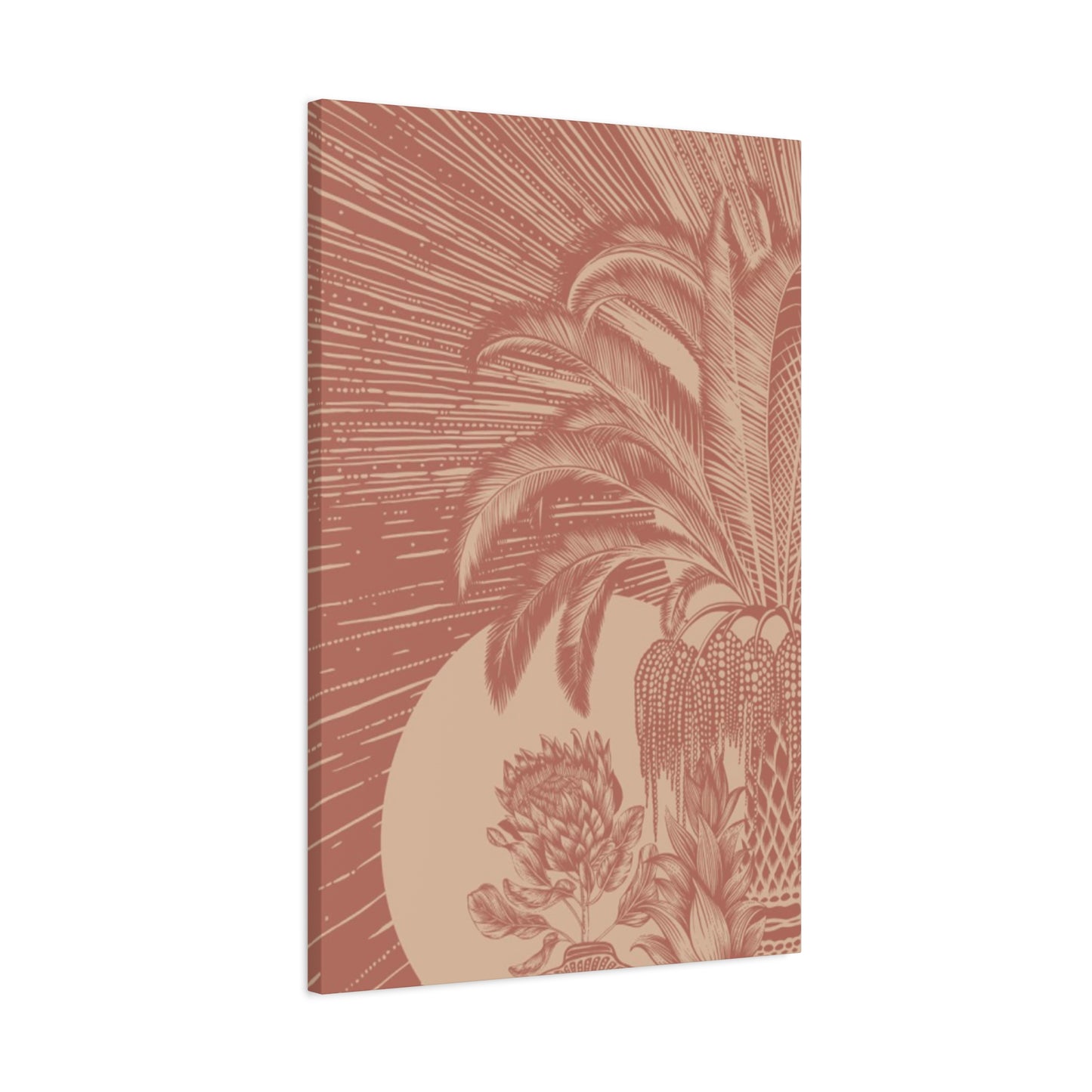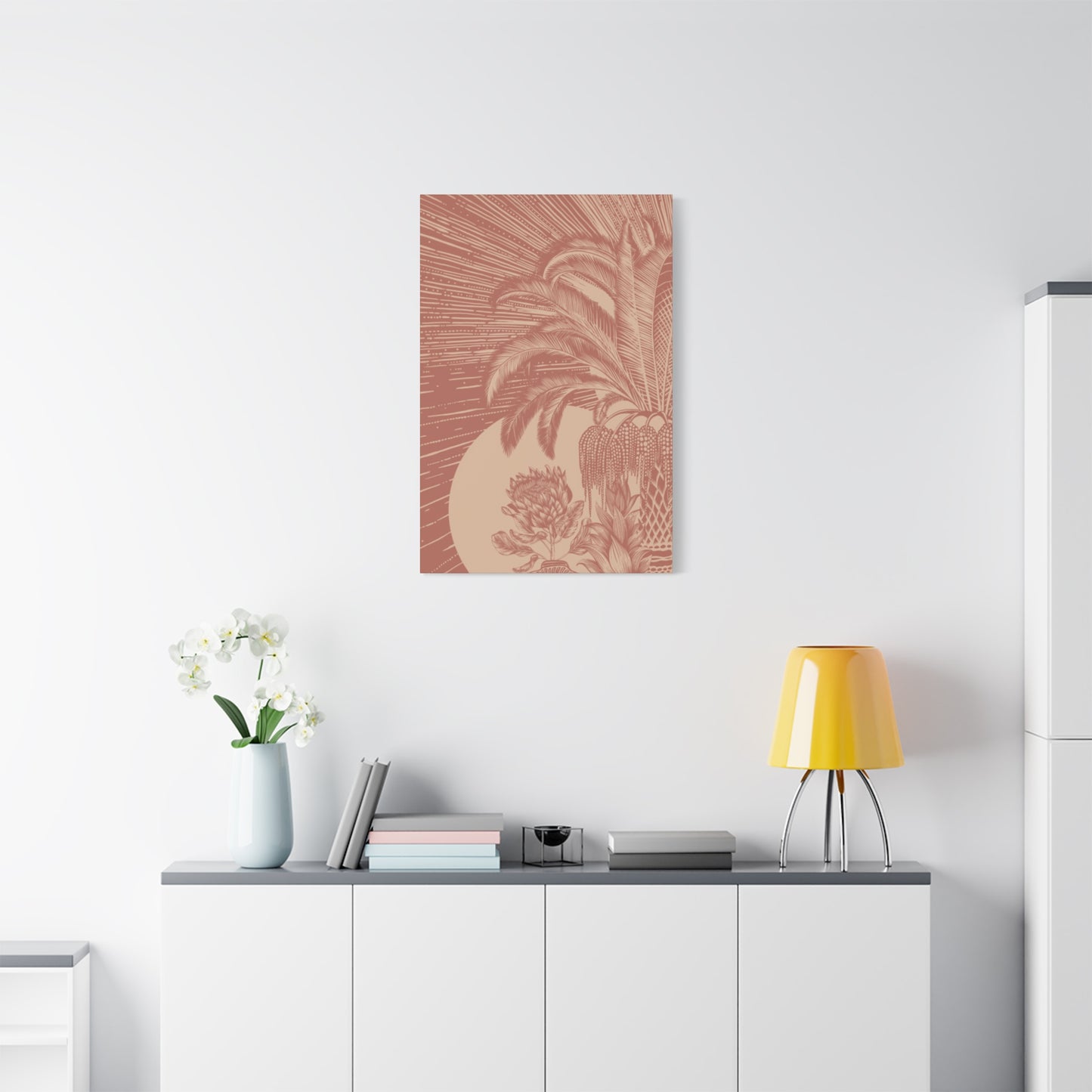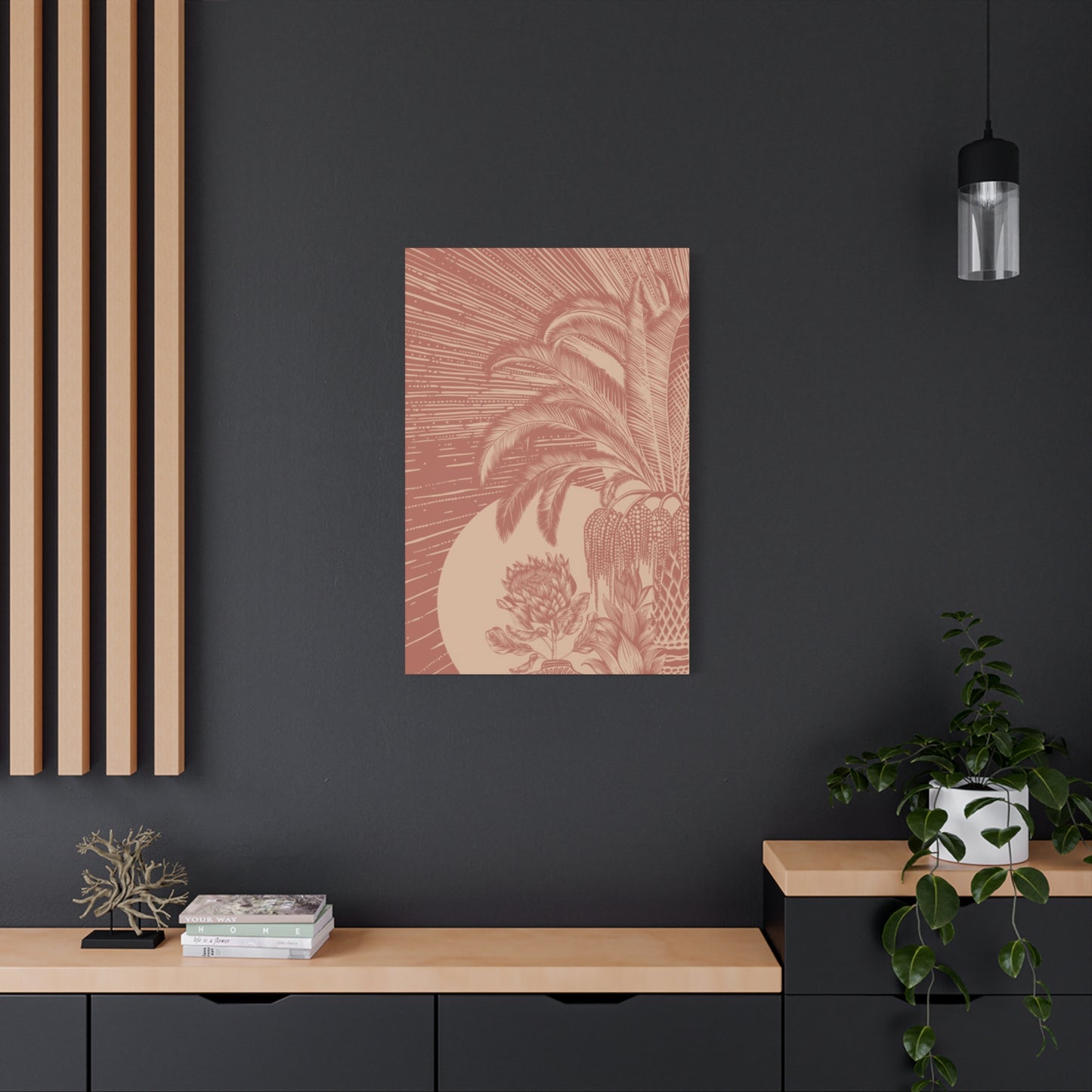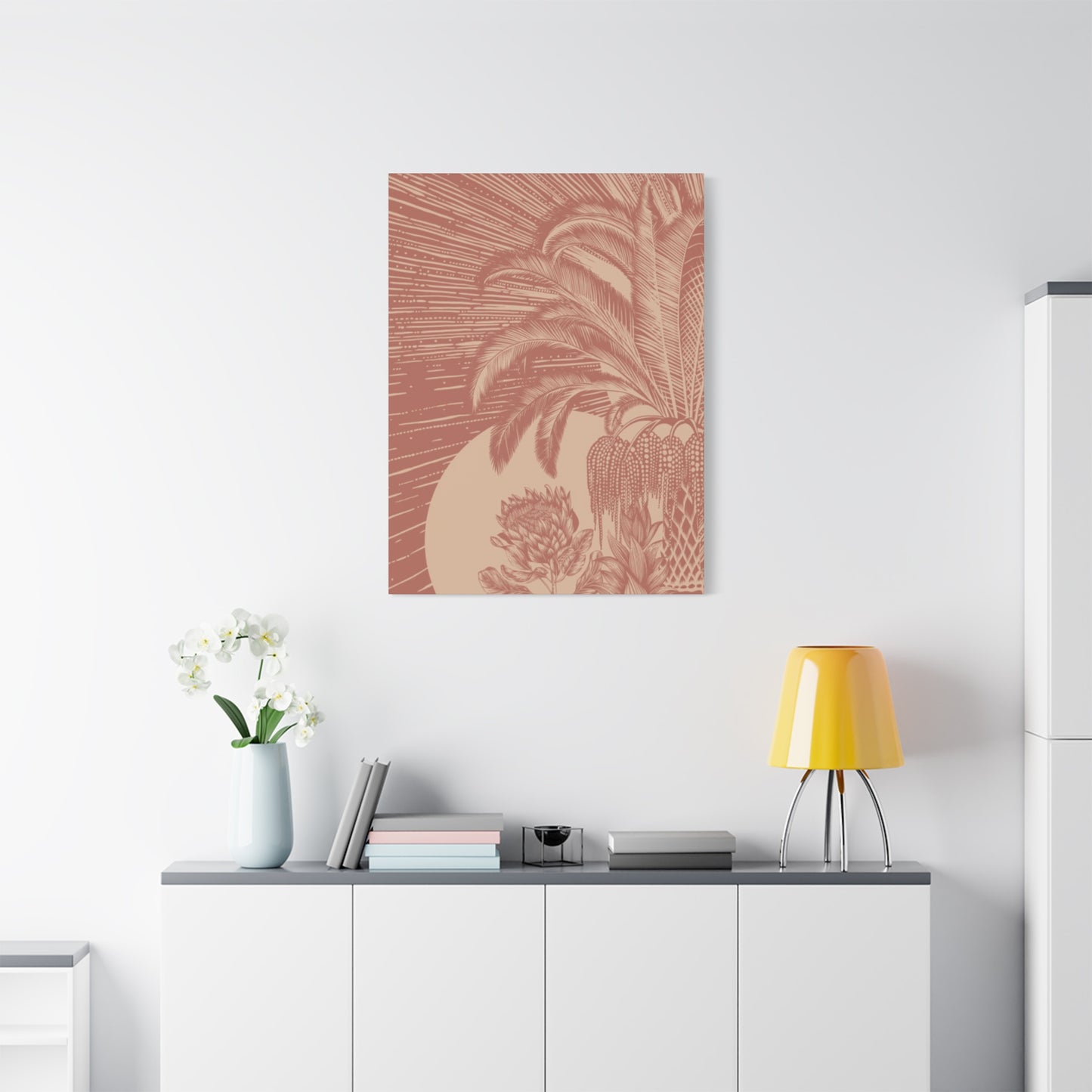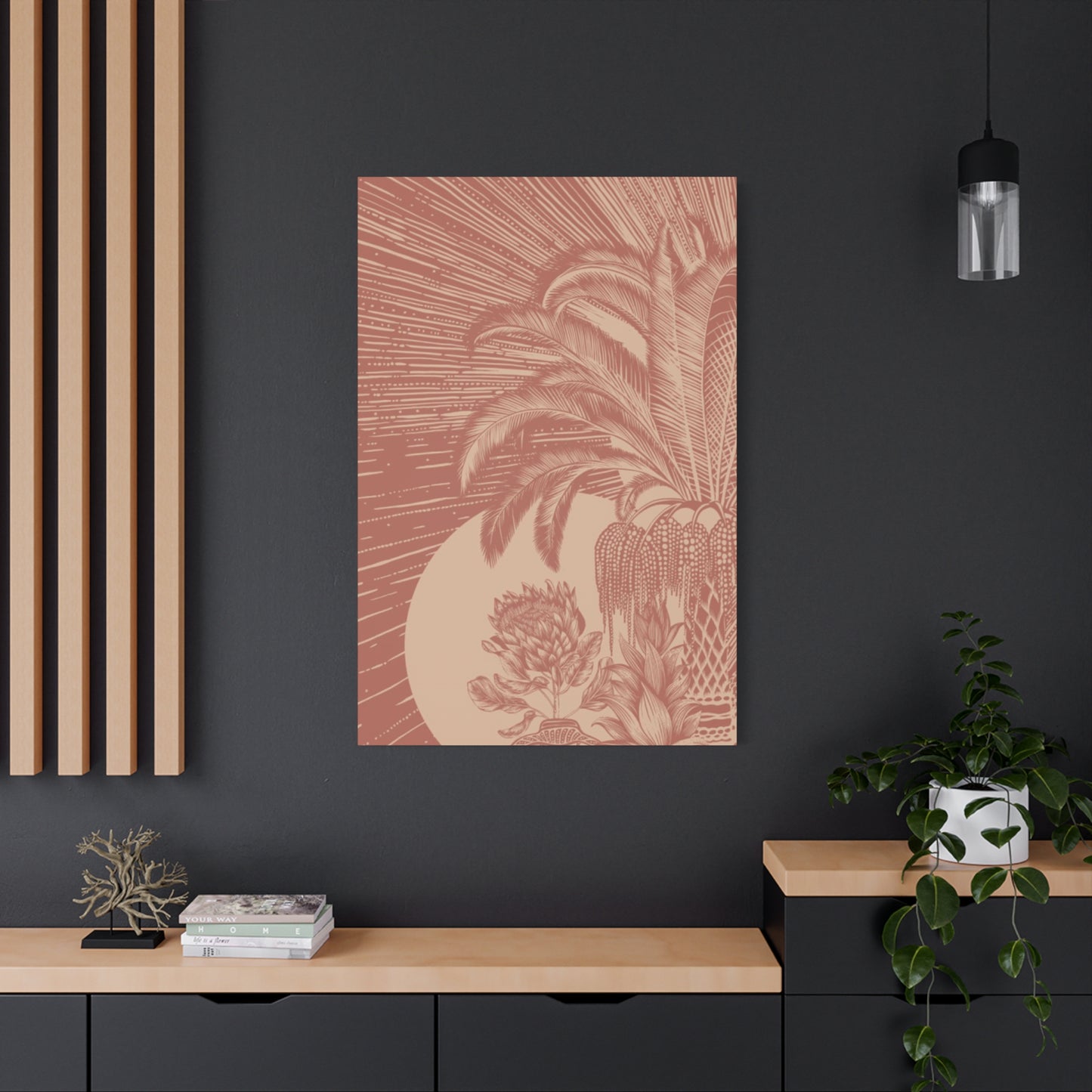Large Three Palm Tree on Beach Wall Art: Bring the Tranquility of the Tropics Home
Transforming your living space into a peaceful sanctuary can be achieved through the strategic incorporation of coastal imagery that evokes memories of sun-drenched beaches and gentle ocean waves. When you bring the natural beauty of swaying palms and turquoise waters into your interior design, you create an atmosphere that promotes relaxation and mental clarity. The visual representation of tropical landscapes has become increasingly popular among homeowners who seek to infuse their spaces with a sense of escapism and natural elegance. This comprehensive exploration will guide you through every aspect of selecting, displaying, and appreciating artwork that captures the essence of paradise within your home.
Tropical Calm: Palm Tree Art
Creating a serene environment through nature-inspired artwork begins with understanding how tropical imagery affects our psychological state. Research has shown that visual representations of natural landscapes can significantly reduce stress levels and improve overall mood. When you introduce palm tree artwork into your living space, you are not simply adding decoration but rather establishing a visual connection to environments associated with vacation, relaxation, and emotional restoration. The graceful silhouettes of palms against expansive skies create a sense of openness that can make even smaller rooms feel more spacious and breathable.
The appeal of palm tree artwork extends beyond mere aesthetics. These iconic trees symbolize resilience, flexibility, and the ability to thrive in challenging environments. Their presence in your home serves as a daily reminder of these qualities, potentially influencing your mindset and approach to daily challenges. The organic curves of palm fronds contrast beautifully with the geometric lines found in modern architecture and furniture, creating visual interest that draws the eye without overwhelming the senses.
Selecting artwork featuring these majestic trees requires consideration of several factors including color palette, composition, and scale. Pieces that showcase three palms in particular create a balanced composition that feels neither sparse nor cluttered. This configuration allows each tree to maintain its individual character while contributing to a cohesive scene. The repetition of the palm form creates rhythm in the composition, guiding the viewer's eye across the artwork in a natural, flowing movement that mirrors the gentle swaying of actual palms in a tropical breeze.
The color schemes typically associated with this type of artwork range from vibrant sunset hues to cool, calming blues and greens. Warm tones featuring golden yellows, burnt oranges, and soft pinks evoke the magical quality of tropical sunrises and sunsets. These warmer palettes work exceptionally well in spaces where you want to create an energizing yet relaxed atmosphere, such as living rooms or creative workspaces. Conversely, cooler palettes dominated by turquoise, navy, and seafoam green promote tranquility and are ideal for bedrooms or meditation spaces.
The artistic style you choose impacts the overall feeling of your space. Photorealistic renderings of palm trees create an immediate connection to actual tropical locations, almost functioning as windows to distant paradises. These detailed representations work well in contemporary spaces where the stark realism provides an interesting contrast to minimalist furnishings. Abstract interpretations, on the other hand, allow for more creative freedom in color and form, potentially complementing eclectic or artistic interior design schemes.
Texture plays an important role in how palm tree artwork interacts with your space. Canvas prints with visible brushstrokes or textured finishes add dimensional interest that changes depending on lighting conditions throughout the day. As natural light shifts across the surface, different aspects of the artwork become highlighted, creating a dynamic element in your décor that never feels static or boring. This textural quality can also help bridge the gap between the two-dimensional artwork and three-dimensional furnishings and accessories.
When considering where to place tropical palm artwork in your home, think about the emotional tone you want to establish in each space. Entry areas benefit from welcoming, uplifting imagery that sets a positive tone as you and your guests enter the home. Living rooms and gathering spaces work well with larger, more dramatic pieces that serve as focal points and conversation starters. Private spaces like bedrooms and bathrooms can feature more intimate, calming compositions that promote personal relaxation and reflection.
The psychological impact of incorporating natural elements into interior spaces cannot be overstated. This concept, known as biophilic design, recognizes the innate human need to connect with nature even when living in urban or suburban environments. Palm tree artwork serves as a powerful tool in satisfying this biological inclination, providing visual access to natural forms and landscapes that our ancestors experienced daily but that modern life often denies us.
Beach Serenity on Canvas
Canvas prints offer a unique medium for capturing the peaceful essence of coastal landscapes. The fabric surface of canvas provides a traditional, gallery-quality appearance that elevates artwork beyond what standard paper prints can achieve. When beach scenes featuring palm trees are transferred onto canvas, the material's texture adds depth and authenticity to the imagery, creating a more immersive viewing experience. The slight give and natural weave of canvas create subtle variations in how light reflects off the surface, adding life and movement to static images.
The durability of canvas makes it an ideal choice for artwork that you intend to enjoy for years to come. Unlike paper prints that can yellow or become brittle over time, properly prepared canvas prints maintain their vibrancy and structural integrity through decades of display. This longevity makes them a worthwhile investment for those who view their home décor as a long-term expression of personal style rather than a temporary arrangement subject to frequent change.
Frameless canvas prints, often called gallery wraps, present a contemporary aesthetic where the image extends around the edges of the stretcher bars. This mounting style eliminates the visual interruption of a frame border, allowing the artwork to blend seamlessly into modern interiors. The three-dimensional quality of stretched canvas creates interesting shadow effects on the wall behind it, adding subtle architectural interest to your space. This presentation style works particularly well with panoramic beach scenes where the extended format enhances the sense of expansive horizons.
The process of creating high-quality canvas prints involves several technical considerations that affect the final product. Giclée printing, a method that uses archival inks and high-resolution image files, produces canvas prints with exceptional color accuracy and longevity. When shopping for beach and palm tree canvas art, seeking out pieces created through this method ensures that the blues of the ocean, the greens of the palm fronds, and the warm tones of sandy beaches remain true and vivid for many years.
Canvas artwork depicting serene beach scenes serves multiple functions in home décor. On a practical level, these pieces fill wall space and provide visual interest. More importantly, they create emotional anchors that influence how we feel in our homes. A well-chosen beach canvas can transform a mundane Tuesday evening in your living room into a moment that carries echoes of vacation tranquility, helping you decompress after challenging days and maintain perspective on life's demands.
The scale of canvas prints significantly impacts their presence in a room. Larger pieces command attention and can anchor entire seating arrangements or wall compositions. When selecting size, consider not only the dimensions of your wall but also the viewing distance. Pieces that will be viewed primarily from across a room can feature broader compositions and can handle larger scales without overwhelming the viewer. Artwork positioned in areas where people will stand or sit close by should feature more detailed, intimate compositions that reward closer inspection.
Color coordination between your canvas artwork and existing décor elements need not be overly rigid. While exact color matching can create a cohesive look, allowing your beach canvas to introduce new colors into your palette can refresh your space and provide opportunities to update accessories and accents over time. The natural color palette of beach scenes typically includes neutrals like sand and driftwood tones that coordinate easily with existing furnishings, making these pieces remarkably versatile despite their specific subject matter.
Lighting considerations dramatically affect how canvas artwork appears in your space. Natural daylight brings out the truest colors and creates the most dynamic viewing experience as the quality and angle of light change throughout the day. In rooms with limited natural light, consider adding picture lights or adjustable spotlights to illuminate your canvas properly. The right lighting not only makes the artwork visible but can also create ambiance in the room, with softly lit beach scenes contributing to a relaxed evening atmosphere.
Three Palms, Endless Peace
The symbolism of three elements appearing together resonates across cultures and artistic traditions. In visual composition, groups of three create stability and interest without the perfect symmetry of pairs or the potential chaos of larger groupings. When three palms appear in artwork, this principle manifests as a balanced scene that feels complete and harmonious. The viewer's eye naturally moves between the three forms, creating an engaging viewing experience that never settles into static observation.
Each palm in a trio composition can represent different aspects or stages, inviting interpretation and personal connection. Some viewers might see representations of past, present, and future, while others might interpret the three palms as symbols of strength, beauty, and resilience. This openness to interpretation makes three-palm compositions particularly meaningful as personal décor choices, allowing each viewer to project their own meanings and associations onto the artwork.
The spacing and arrangement of three palms within a composition dramatically affect the artwork's overall character. Palms positioned close together create intimacy and suggest a protected grove or oasis. Wider spacing emphasizes the individual character of each tree while still maintaining compositional unity through their shared forms and their relationship to other elements like sky and sea. Varied heights and angles among the three palms add naturalism and prevent the composition from feeling too formulaic or staged.
Endless peace, the emotional goal of much tropical artwork, stems from specific visual elements that trigger relaxation responses in viewers. Horizontal lines, such as the meeting of sky and sea, create stability and calm. The gentle curves of palm fronds introduce organic softness that our brains associate with safety and natural environments. When these elements combine in artwork featuring three palms, they create a powerful visual recipe for tranquility that can genuinely affect your mood and stress levels.
The concept of bringing endless peace into your home through artwork connects to the ancient practice of creating sacred or contemplative spaces within dwellings. Throughout history, humans have designated certain areas or objects as focal points for meditation, prayer, or simple quiet reflection. Modern secular interpretations of this practice might involve creating reading nooks, meditation corners, or simply ensuring that your primary living spaces promote calm rather than agitation. Thoughtfully chosen artwork featuring peaceful tropical scenes supports these intentions.
Time of day depicted in three-palm artwork influences its emotional impact. Dawn scenes with soft, cool light suggest new beginnings and quiet contemplation. Midday images with bright, clear light feel energetic and uplifting while still maintaining the peaceful quality of tropical settings. Sunset compositions with warm, glowing light create romance and reflection, making them ideal for spaces where you unwind at the end of the day. Evening scenes with palms silhouetted against twilight skies offer drama and mystery while maintaining tranquil qualities.
The peaceful quality of palm tree artwork can be enhanced or diminished by surrounding décor elements. To maximize the calming effect of your three-palm piece, consider the overall sensory environment of the room. Cluttered spaces full of competing visual elements will dilute the peaceful impact of any artwork. Creating visual breathing room around your piece through thoughtful furniture arrangement and restrained accessorizing allows the artwork to fully express its serene character and fulfill its role as a focal point for relaxation.
Personal association plays a significant role in how artwork affects your emotional state. If you have positive memories of tropical vacations or coastal living, artwork featuring three palms will activate those memory networks, bringing associated feelings of relaxation and happiness into your current experience. Even without direct personal experience of tropical locations, cultural associations transmitted through films, literature, and popular imagery create shared understanding of palm trees as symbols of paradise and escape from everyday concerns.
Large Coastal Wall Inspiration
Statement-sized artwork transforms rooms in ways that smaller pieces cannot achieve. When you commit significant wall space to a single large image of coastal beauty, you make a bold declaration about what matters in your home environment. Large coastal pieces serve as more than decoration; they function as architectural elements that influence the perception of space, light, and atmosphere. The sheer scale commands attention and creates an immersive quality that transports viewers into the depicted scene.
Selecting appropriately sized artwork involves understanding the relationship between wall dimensions, ceiling height, and viewing distance. Interior designers often recommend that artwork should occupy roughly two-thirds to three-quarters of the available wall space above a furniture piece to create balanced proportion. For walls without furniture below, the artwork should be substantial enough to anchor the space without overwhelming it. Large coastal pieces typically begin around forty inches in width and can extend to eight feet or more for dramatic impact in spacious rooms.
The inspirational quality of coastal imagery stems from its connection to universal human experiences and aspirations. Oceans and beaches represent freedom, possibility, and the vastness of nature beyond human control. When we incorporate these elements into our daily environments through large-scale artwork, we create constant visual reminders of perspectives that extend beyond immediate concerns and temporary stresses. This subtle psychological effect can influence our reactions to challenges and our overall sense of life satisfaction.
Vertical versus horizontal orientation significantly impacts how large coastal artwork interacts with your space. Horizontal pieces emphasize width and can make walls appear longer, which works well for creating a sense of expansiveness in rooms with adequate width but lower ceilings. Vertical orientations draw the eye upward, making ceilings appear higher and creating a sense of grandeur that suits rooms with good vertical space. The natural horizontal format of seascapes and beach vistas lends itself well to landscape orientation, though creative compositions can work beautifully in vertical formats as well.
Inspiration drawn from coastal artwork manifests in various aspects of daily life. The calm you feel when viewing your large beach piece might influence you to approach problems with greater patience and perspective. The sense of freedom evoked by expansive ocean views could inspire more adventurous thinking in your work or personal projects. These effects, while subtle, accumulate over time as you interact with your artwork daily, making it a meaningful component of your overall living environment rather than mere decoration.
Installation considerations for large coastal pieces require careful planning to ensure both aesthetic success and physical safety. Proper wall anchors rated for the weight of your artwork are essential, particularly for large canvas or framed pieces that can weigh substantial amounts. The center of the artwork should typically hang at eye level, usually around fifty-seven to sixty inches from the floor, though this guideline can be adjusted based on ceiling height and furniture placement. For pieces hanging above sofas or consoles, leaving six to twelve inches of space between the furniture and the bottom of the artwork creates proper visual connection.
Large coastal artwork can anchor entire design schemes, with other elements in the room drawing colors and themes from the piece. This approach simplifies decorating decisions and creates cohesive spaces where everything feels intentionally related. Throw pillows might echo the blue tones of the ocean in your artwork, while natural fiber rugs complement the sandy tones. Decorative accessories like coral sculptures or driftwood pieces create thematic continuity that reinforces the coastal aesthetic without becoming heavy-handed or theme-park-like.
The investment in large coastal artwork represents more than a financial transaction. You are investing in the daily experience of your home environment and the cumulative effect that environment has on your wellbeing. Quality artwork that genuinely speaks to you provides value that extends far beyond its monetary cost, influencing your mood, impressing guests, and creating a home environment that feels uniquely yours. This perspective helps frame the purchase as an investment in quality of life rather than a discretionary expense.
Paradise Found in Palm Art
The concept of paradise carries different meanings across cultures and individuals, but certain elements appear consistently in human visions of ideal environments. Lush vegetation, particularly palm trees, appears frequently in these conceptualizations, along with clean water, pleasant temperatures, and freedom from threats. Artwork depicting these elements taps into deeply rooted preferences shaped by human evolutionary history when identifying safe, resource-rich environments meant survival.
Finding your personal vision of paradise expressed in art creates a powerful connection between the piece and your emotional life. When you encounter artwork that captures the specific combination of elements that represent paradise to you, whether through color, composition, light quality, or specific details, the recognition creates immediate resonance. This connection makes the artwork personally meaningful rather than simply attractive, transforming it from generic decoration into something that reflects your identity and values.
Palm art encompasses a surprising range of artistic styles and approaches. Traditional realistic paintings capture every detail of palm bark texture, individual frond segments, and the play of light through the canopy. Impressionistic approaches suggest the essence of palms through strategic brushstrokes and color placement, creating works that convey feeling over photographic accuracy. Abstract representations might reduce palm forms to their essential shapes and movements, creating sophisticated compositions that reference tropical themes without literal depiction.
The paradise found in palm artwork often includes elements beyond the palms themselves. Crystal-clear water in shades of turquoise and aquamarine suggests pristine tropical seas. Soft white or golden sand creates visual contrast with lush greenery. Expansive skies in various moods from brilliant blue to dramatic sunset colors frame the scene and contribute significantly to the overall atmosphere. The way these elements interact with the palm trees creates the complete visual recipe for paradise.
Cultural associations with palm trees and paradise have been reinforced through decades of travel advertising, films, and popular media. These shared cultural references mean that palm artwork communicates instantly recognizable concepts of relaxation and escape. This shared language of imagery allows your décor choices to communicate your values and aspirations to others who enter your space, creating environments that feel welcoming and that express something meaningful about who you are.
Bringing paradise into your home through artwork serves practical and philosophical purposes. On a practical level, it creates an environment where you want to spend time, which improves your daily experience of your home. Philosophically, it represents a commitment to creating beauty and meaning in your immediate environment rather than postponing these considerations until some future ideal time. This approach reflects a mindset that values present experience and finds ways to incorporate elements of joy and beauty into everyday life.
The search for paradise in art form connects to the broader human need for hope and aspiration. In challenging times, artwork depicting idealized natural beauty provides visual evidence that such places and moments exist, even if they are not currently accessible. This reminder can sustain optimism and provide motivation to work toward experiences and circumstances that align more closely with your vision of an ideal life. In this way, paradise artwork functions as more than decoration, serving as a daily reminder of possibilities and goals.
Seasonal considerations affect how paradise-themed artwork interacts with your experience of home. During cold winter months, tropical palm art provides a powerful counter-narrative to the stark conditions outside, offering visual warmth and reminders of summer. In warmer months, the same artwork celebrates and extends the pleasant weather, creating continuity between indoor and outdoor experiences. This year-round relevance makes tropical paradise artwork a perennially appropriate choice that never feels seasonally out of place.
Beachside Beauty for Modern Homes
Contemporary home design emphasizes clean lines, uncluttered spaces, and intentional use of natural materials and textures. Beach-inspired artwork fits naturally into this aesthetic, providing organic forms and natural color palettes that complement modern interiors without compromising their sophisticated character. The key to successful integration lies in selecting pieces whose style and presentation align with modern design principles while providing the warmth and connection to nature that prevent contemporary spaces from feeling cold or sterile.
Modern homes often feature open floor plans where multiple functional areas share visual space. In these layouts, large beach artwork can serve as a unifying element that provides visual cohesion across different zones. A substantial piece visible from kitchen, dining, and living areas creates a consistent focal point that helps these spaces feel connected despite serving different purposes. The beach theme works well across various activities, equally appropriate as a backdrop for casual family dinners, formal entertaining, or quiet relaxation.
Color palettes in modern design typically favor neutrals with strategic pops of color. Beach artwork naturally provides this balance, with sand, driftwood, and soft sky tones serving as neutrals while ocean blues and sunset colors add controlled splashes of color. This natural alignment means beach pieces rarely clash with modern color schemes and often enhance them by introducing organic color variations that feel less stark than solid blocks of decorator colors.
The materials and presentation methods used for beach artwork affect its suitability for modern spaces. Frameless gallery-wrapped canvases align well with modern aesthetics, as do pieces mounted on hidden floating frames that create clean edges and shadow effects. Traditional heavy frames with ornate profiles generally work less well in modern contexts unless the artwork itself is traditional enough to warrant this presentation. For modern spaces, allowing the artwork itself to take center stage without competing with elaborate framing produces the most cohesive results.
Furniture arrangement in modern homes can be informed by the placement of beach artwork. A large coastal piece might determine the orientation of a sectional sofa or the placement of accent chairs arranged to allow comfortable viewing of the art. This approach treats the artwork as an important element in the room's functional layout rather than as an afterthought added once furniture is arranged. The result is a space where art and function integrate seamlessly, with each enhancing the other.
Lighting design in modern homes offers opportunities to showcase beach artwork effectively. Track lighting with adjustable heads can be positioned to highlight artwork without creating glare on canvas surfaces. Recessed lighting with adjustable trims provides similar flexibility in a lower-profile package. Smart lighting systems allow you to adjust the intensity and color temperature of lights illuminating your artwork, potentially shifting from bright, cool light during daytime to warm, dim light in evenings to match natural circadian rhythms and activities.
The beauty of beach-themed artwork lies partly in its ability to soften modern interiors without undermining their sophisticated character. The organic curves of palm fronds and the irregular forms of natural coastlines introduce visual complexity that contrasts with the geometric precision of modern architecture and furniture. This contrast creates visual interest and prevents modern spaces from feeling too rigid or predictable, while the natural subject matter adds essential warmth and humanity to potentially austere contemporary design.
Modern homeowners increasingly value experiences over possessions, seeking to create environments that support desired lifestyles rather than simply showcase material goods. Beach artwork aligns with this values shift by prioritizing the experience of peace, beauty, and connection to nature over ostentatious display. A thoughtfully chosen coastal piece contributes to an environment that supports relaxation and wellbeing, reflecting priorities that extend beyond surface appearances to encompass quality of daily life.
Sun, Sand, and Palm Elegance
The trinity of sun, sand, and palms represents the essential elements of tropical beach environments, each contributing distinct qualities to the overall experience. Sun provides the brilliant light that makes colors vibrant and creates the warm, energizing quality associated with tropical climates. Sand offers textural contrast and the warm neutral tones that ground beach scenes visually. Palms contribute verticality, organic form, and the lush green that signals abundant life. Artwork that successfully captures all three elements creates a complete visual representation of tropical elegance.
Elegance in beach artwork distinguishes sophisticated pieces from generic tropical clichés. Elegant compositions demonstrate restraint, presenting their subjects with refinement rather than overwhelming viewers with excessive elements. Color choices in elegant beach art tend toward subtle gradations rather than garish contrasts, creating sophisticated palettes that feel curated and intentional. The treatment of light in elegant pieces shows understanding of how illumination creates mood and atmosphere, with careful attention to highlights, shadows, and the quality of light in different conditions.
The interplay of sun and shadow in palm artwork adds dimensionality and realism that flat, evenly lit images cannot achieve. Dramatic side lighting creates strong shadows that emphasize the texture of palm bark and the three-dimensional structure of fronds. Backlighting can create glowing effects where sunlight filters through translucent palm leaves, producing luminous greens and golds. The angle and quality of sunlight also indicates time of day, with low-angle light suggesting morning or evening and creating longer, more dramatic shadows than overhead midday sun.
Sand depicted in artwork serves multiple compositional functions beyond representing the actual beach surface. As a large expanse of warm neutral tone, sand provides visual rest areas where the viewer's eye can pause between more complex elements like palm fronds and ocean waves. The texture of sand, whether smooth and pristine or marked by wind patterns and footprints, adds visual interest at the bottom of compositions and helps ground the scene. Color variations in sand from pure white to golden tan to pinkish coral contribute to the overall palette and can be selected to coordinate with interior color schemes.
Palm elegance manifests in the graceful curves and proportions of these distinctive trees. Unlike the rigid vertical forms of many tree species, palms bend and curve with wind and growth patterns, creating organic lines that add movement and grace to compositions. The repetition of frond patterns creates rhythm, while variations in frond direction and spacing prevent monotony. The relationship between the slim trunk and the expansive crown creates elegant proportions that have inspired architectural elements and decorative motifs across cultures.
Creating elegant beach environments in your home through artwork requires consideration of context and proportion. An elegant beach piece should suit its surroundings in scale and style, neither disappearing into the background nor dominating the space so completely that other elements cannot register. The maturity of the design approach should match the sophistication level of the home overall, with more refined spaces calling for artwork that demonstrates artistic skill and conceptual depth rather than purely decorative appeal.
The psychological effects of sun, sand, and palm imagery connect to fundamental human responses to environmental cues. Bright sunshine in imagery can boost mood and energy levels through visual association, even though you are not physically in sunlight. The warm tones of sand create feelings of comfort and relaxation associated with pleasant temperatures. The presence of thriving plant life like palm trees signals safety and resource availability at a subconscious level, contributing to overall feelings of wellbeing when you spend time in rooms featuring this imagery.
Sophisticated beach artwork transcends seasonal trends by focusing on timeless elements of natural beauty rather than temporary stylistic fashions. While the popularity of specific colors or artistic styles may fluctuate, the fundamental appeal of sun, sand, and palms remains constant. This timeless quality makes elegant beach artwork a lasting investment that will continue to work in your space for years, even as other décor elements are updated to reflect evolving tastes and circumstances.
Large Tropical Canvas Décor
Decorating with tropical canvas pieces offers unique opportunities to transform interior spaces through powerful natural imagery. The substantial presence of large canvases creates immediate impact, establishing focal points that organize visual attention and create hierarchy in room design. Unlike smaller decorative objects that must work collectively to make an impression, a single large tropical canvas can anchor an entire room, providing clear direction for other design decisions and creating a confident, decisive aesthetic.
The tropical genre encompasses diverse landscapes and botanical subjects beyond classic beach and palm scenes. Lush rainforest imagery with layered vegetation creates depth and complexity that rewards extended viewing. Exotic flowers like hibiscus, plumeria, and bird of paradise add vivid color and organic forms. Tropical fruit arrangements combine still life traditions with exotic subject matter. Underwater scenes featuring coral reefs and tropical fish expand the tropical theme into marine environments. This variety allows you to select tropical canvas décor that aligns with your specific interests and aesthetic preferences.
Canvas as a medium offers practical advantages for large-scale artwork. The relatively light weight compared to framed prints under glass makes hanging easier and places less stress on wall attachments. The lack of reflective glass means viewing angles remain consistent without glare issues that can make traditionally framed pieces difficult to see from certain positions. The textured surface of canvas adds subtle visual interest that changes with lighting conditions, creating a more dynamic viewing experience than flat paper prints.
Tropical color palettes span a wide range from the subdued to the vibrant. Subtle tropical pieces emphasizing seafoam greens, soft corals, and sandy neutrals create calming environments that provide tropical flavor without overwhelming other design elements. Bold tropical pieces featuring intense turquoise, hot pink, and vivid orange create dramatic, energizing spaces that make confident statements. Your choice between these approaches should reflect both your personal preferences and the overall energy level you want to establish in the space.
Multiple large tropical canvases can be arranged to create impact beyond what a single piece achieves. Triptychs present a single scene across three panels, creating horizontal expansion that works beautifully above long furniture pieces or in wide wall spaces. Vertical stacking of multiple canvases creates gallery wall arrangements that add interest to tall, narrow wall spaces. Careful attention to spacing between multiple pieces ensures they read as intentional groupings rather than randomly placed items, typically maintaining consistent gaps of two to four inches between panels.
The decorative function of large tropical canvas pieces extends beyond pure aesthetics to influence the psychological character of spaces. Rooms featuring tropical imagery feel more relaxed and casual than those with formal artwork, which can be advantageous or disadvantageous depending on the room's purpose. Living rooms and bedrooms generally benefit from this relaxed quality, while formal dining rooms or home offices might require more careful consideration to ensure the tropical aesthetic aligns with the room's functional requirements.
Caring for canvas artwork ensures its longevity and continued beauty. Dusting with a soft, dry cloth removes accumulated particles without damaging the surface or printed image. Avoiding direct sunlight prevents fading, though some exposure to indirect natural light brings out the best colors without causing damage. Maintaining moderate humidity levels prevents canvas from becoming too dry and brittle or too moist and prone to mold. These simple maintenance practices preserve your investment and keep your tropical décor looking fresh for many years.
The evolution of printing technology has dramatically improved the quality and affordability of large canvas décor. Modern giclée printing produces colors with exceptional accuracy and depth, capturing subtle gradations that earlier printing methods could not reproduce. Archival inks resist fading for decades when properly displayed, maintaining color vibrancy that older prints lost within years. These technological improvements mean today's large tropical canvas pieces offer quality previously available only in original artwork at accessible price points that make professional-quality art available to broader audiences.
Relaxation Captured in Art
The ability of visual art to induce relaxation stems from multiple mechanisms operating simultaneously. Color psychology explains how certain hues affect mood and arousal levels, with blues and greens generally promoting calm while reds and oranges increase energy. Compositional elements like horizontal lines create stability and peace, while excessive diagonal lines or chaotic arrangements can increase visual tension. Subject matter featuring natural scenes activates positive associations and memories while providing mental escape from immediate concerns and stressors.
Capturing relaxation in static artwork requires artistic decisions that translate the feeling of calm into visual form. Soft edges and gentle transitions between elements create a soothing quality, while harsh lines and abrupt contrasts feel more jarring. Balanced compositions where elements are distributed evenly across the frame feel more restful than asymmetrical arrangements that create visual tension. The depiction of gentle movement, such as palm fronds swaying in a breeze or soft waves lapping at shore, suggests the peaceful dynamism of nature rather than the stillness of death or the chaos of storms.
Personal associations play crucial roles in how effectively artwork induces relaxation. If tropical beaches hold positive memories of family vacations or romantic getaways, artwork depicting these scenes will activate those memory networks and associated positive emotions. Even without personal experience, cultural programming through media and advertising has created shared associations between tropical imagery and relaxation, vacation, and freedom from responsibilities. These collective associations mean tropical artwork can communicate relaxation even to viewers without direct experience of the environments depicted.
The context in which you encounter relaxing artwork affects its impact. A piece viewed hurriedly while rushing through a space will have less effect than one contemplated during intentional moments of rest. Creating situations where you can engage with your artwork meaningfully, such as positioning a favorite reading chair with a clear view of your tropical piece, maximizes the relaxation benefits. Even brief moments of visual connection throughout the day, glancing at the artwork while moving through your home, provide small doses of calm that accumulate beneficially.
Artwork depicting relaxation serves as both reminder and permission to prioritize calm in your life. In cultures that glorify busyness and productivity, making space for rest and relaxation can feel self-indulgent or wasteful. Prominent artwork celebrating peaceful moments and serene environments makes a statement about your values, declaring that relaxation merits attention and that creating beautiful, calm spaces deserves effort. This visible commitment to relaxation can influence your behavior, making it easier to justify taking breaks and managing stress effectively.
The relationship between physical relaxation and mental calm appears in how we respond to relaxing artwork. Viewing peaceful scenes can trigger physiological relaxation responses including decreased heart rate, lowered blood pressure, and reduced muscle tension. These physical changes support mental relaxation, creating a beneficial feedback loop where physical calm enhances mental peace, which further reduces physical stress responses. Strategic placement of relaxing artwork in areas where you engage in stress-reducing activities like reading, meditation, or yoga amplifies these benefits.
Different intensities of relaxation suit different spaces and purposes. Bedroom artwork should promote deep relaxation conducive to sleep, suggesting pieces with minimal visual complexity and soothing color palettes. Living room art might aim for an alert but relaxed state that suits conversation and entertainment, potentially incorporating more visual interest and slightly more energetic colors. Understanding these distinctions helps you select and place artwork that supports the specific kind of relaxation appropriate for each space.
The long-term effects of regularly viewing relaxing artwork may extend beyond immediate mood improvements. Consistent exposure to visual reminders of calm and beauty could influence overall stress resilience and life satisfaction. While individual viewing moments provide temporary relief, the cumulative effect of living with imagery that promotes peace might contribute to lasting improvements in how you manage stress and maintain perspective during challenging periods. This possibility frames artwork selection as a meaningful component of overall self-care strategy rather than a trivial decorating decision.
Ocean Breeze and Palm Dreams
The sensory experience of coastal environments combines visual beauty with distinctive physical sensations and sounds. Ocean breezes provide cooling relief and carry the scent of salt water and marine life. The sound of waves creates rhythmic white noise that masks distracting sounds and promotes relaxation. While artwork cannot reproduce these non-visual elements, effective pieces suggest them through visual cues that trigger memory and imagination, allowing viewers to mentally recreate the full sensory experience based on visual prompts alone.
Palm trees swaying in ocean breezes create one of the most iconic images of tropical paradise. The movement of fronds, captured in artwork through careful positioning and suggested motion, communicates the presence of wind and the dynamic quality of natural environments. Artists might depict fronds swept to one side, creating diagonal lines that suggest directional wind force. Multiple fronds shown at different angles can suggest the varied, shifting nature of breeze, creating more dynamic compositions than rigidly positioned palms would allow.
Dreams of tropical escape fulfill deep psychological needs that extend beyond simple vacation fantasies. These dreams represent desires for freedom from constraints, connection with natural beauty, and experiences of peace unavailable in typical daily routines. Artwork capturing this dream quality through idealized depictions of palm-lined beaches provides accessible contact with these aspirational visions, offering daily reminders that such experiences exist and might be attainable with planning and intention.
The color palette associated with ocean breezes tends toward cooler tones that suggest refreshing air movement. Turquoise and aquamarine ocean colors communicate clear tropical waters, while lighter sky blues suggest the clarity that accompanies pleasant breezes. These cool tones create visual refreshment that can provide psychological relief in warm climates or during summer months, while in colder seasons they offer contrast and variety from winter color schemes dominated by warmer tones.
Dreamy qualities in artwork arise from technical choices that soften reality slightly while maintaining recognizable forms. Soft focus effects blur fine details while preserving overall composition, creating an ethereal quality that suggests memory or imagination rather than documentary photography. Muted color saturation can enhance this dreamy feeling, moving away from hyper-real intensity toward more subdued palettes that feel contemplative. Light effects, particularly glowing or diffused light, contribute significantly to dream-like atmospheres in artwork.
Conclusion:
Large Three Palm Tree on Beach Wall Art: Bring the Tranquility of the Tropics Home exemplifies the power of nature-inspired imagery to transform interiors into serene, visually captivating retreats. Palm trees, iconic symbols of tropical landscapes and coastal relaxation, evoke feelings of warmth, leisure, and escape. By featuring three elegantly composed palm trees on a sun-kissed beach, wall art captures the rhythm of the tropics, the interplay of light and shadow, and the gentle movement of fronds swaying in the breeze. This artwork invites viewers to bring the calming essence of coastal life into their homes, providing both aesthetic pleasure and emotional rejuvenation.
At the heart of this artwork lies its ability to balance tranquility with visual impact. The composition of three palm trees creates a harmonious focal point, drawing the eye naturally across the canvas and emphasizing the elegance of form, line, and proportion. Artists often highlight textures — from the rough bark of the trunks to the delicate sweep of leaves and the granular detail of sand — enhancing realism and inviting tactile appreciation. The backdrop of the beach, ocean, and sky adds depth and perspective, establishing a sense of openness and calm that extends beyond the physical dimensions of the wall. Whether presented as a large-scale canvas, framed print, or multi-panel piece, the art captures the serene beauty and expansive feeling of tropical landscapes.
From an interior design perspective, palm tree beach art is remarkably versatile. Its color palette — soft sandy beiges, rich green fronds, deep ocean blues, and warm golden sunlight — complements a wide range of décor styles, from modern minimalism to coastal-inspired, bohemian, or eclectic interiors. A large canvas above a sofa or bed can serve as the room’s centerpiece, instantly setting a relaxed and inviting mood. Smaller or paired prints can form a gallery arrangement that emphasizes continuity and rhythm, allowing homeowners to explore various perspectives of the beach while maintaining cohesion. This adaptability ensures that tropical art can enhance multiple spaces, including living rooms, bedrooms, home offices, or even spa-inspired bathrooms.
Lighting significantly enhances the beauty and emotional impact of tropical wall art. Natural sunlight amplifies the vibrancy of colors, highlights textures, and mimics the warmth of tropical days. Accent lighting, such as soft spotlights or adjustable sconces, can add depth, create shadows, and emphasize the gentle sway of the palms, producing a dynamic interplay between light and form. Properly illuminated, the artwork feels alive, capturing the essence of a beach environment and inviting viewers into its tranquil narrative.
Beyond aesthetics, tropical wall art fosters psychological and emotional well-being. Studies have shown that nature imagery, particularly scenes of water, greenery, and open skies, reduces stress, enhances relaxation, and promotes a sense of mental clarity. The presence of three palm trees on a calm beach evokes feelings of peace, escape, and renewal, encouraging mindfulness and offering a visual sanctuary from the pressures of daily life. These qualities make tropical wall art particularly effective in spaces designed for relaxation, reflection, or social connection.
Artists use a variety of techniques to bring palm tree beach art to life. Realistic depictions capture intricate details of leaves, sand, and water reflections, while impressionistic or abstract styles focus on light, color, and mood to create an emotive experience. Multi-panel layouts, panoramic canvases, and textured mediums further enhance depth and presence, making viewers feel immersed in the tropical environment. This variety ensures that homeowners can select pieces that align with both their design vision and emotional intent.
Ultimately, Large Three Palm Tree on Beach Wall Art demonstrates that carefully chosen nature-inspired artwork can transform interiors, turning walls into gateways of tranquility, beauty, and inspiration. It celebrates the serenity of tropical landscapes while providing bold visual interest, combining aesthetic sophistication with emotional resonance.
In essence, incorporating this palm tree beach art into your home is both a design and lifestyle statement. It elevates interiors by introducing the calm, warmth, and expansive beauty of the tropics, creating spaces that are inviting, restorative, and visually harmonious. Thoughtful placement, complementary décor, and appropriate lighting allow homeowners to transform ordinary rooms into immersive retreats, where the soothing rhythm of waves, the gentle sway of palms, and the golden warmth of the sun are experienced daily. Each piece becomes a visual reminder of leisure, nature, and serenity — a perfect blend of artistry and escape.


















